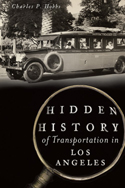My car had been acting up for a few days. By the sluggish way it moved when I pressed the accelerator, I knew it was something serious, like the transmission.
After a few days of this, I drove it to the shop and left it there. Not wanting to hang around for several hours, I wondered how I could go home.
Walk? Three miles (about an hour) in Rancho Cucamonga’s 100-degree late-summer heat?
Bike? If I had thought about it, I could have brought along my bike. But again, it was too hot to make riding practical.
The bus? There was a bus stop not too far away from the shop. But the walk from the bus stop to home would take 20 minutes. Besides, I didn’t have the $1.75 cash fare handy—the nearest ATM was another 15-minute walk—each way.
A taxi? They take credit cards. But last time I rode a taxi home from the Rancho Cucamonga Metrolink station, it cost nearly $20, including tip. The auto shop was closer, but I could imagine it costing at least $15.
Then I remembered I had the apps for Uber and Lyft on my iPhone.
Officially known as “Transportation Network Companies,” Uber, Lyft, and similar services use smartphone applications to match prospective riders with drivers. Fares are paid through the app; no cash changes hands in the vehicle. Their fares are about half as expensive as taxi fares.
However, both governmental agencies and existing operators (e.g., taxi companies) question the legality and safety of the TNC’s. These are private individuals using their private vehicles as a commercial taxi—shouldn’t the rules governing taxis and other commercial transportation services apply to them as well? Who checks out the drivers, making sure they are safe and not potential criminals? Insurance coverage is another issue. Will the driver’s insurance cover the passenger in case of an accident?
Although I had installed the apps for both Uber and Lyft some time ago, I could never bring myself to try them out. Too much like hitchhiking, or getting into a car with a stranger. But now, might as well give it a try. It would at least give me something to write about…
Selecting the better-known Uber, I provided its app with the information it requested:name, email, and a credit card number. Then I told the app where I was and where I wanted to go.
The Uber app displayed a map, upon which I could actually see the cars moving about. The estimated fare was $4 to $6—reasonable. I clicked “Confirm” and the app assured me my ride would arrive in four minutes. It displayed a picture of the driver and the license plate number of the car sent to pick me up. The app counted down to three minutes…two minutes…one…
A red Toyota Prius with the Uber logo on the windshield pulled up. I glanced at its license plate…yup, it matched the one on the app.
I approached the car with trepidation, not sure whether I should sit in the front or the back. “Sit where you like,” said the friendly driver.
I took a seat in the back. The car was very clean, both inside and out. As we started to drive away, the driver pointed to his phone, mounted just under the rearview mirror. “I’ll follow the GPS route unless you have a preference,” he said.
“GPS is fine,” I replied.
On the way, we passed by Victoria Gardens, a large shopping mall in Rancho Cucamonga. “That mall is busy,” the driver said. “Especially at night. We get riders from as far as LA and UC Riverside riding to and from the mall.”
“Does anyone ride to the train station?” I asked, thinking Uber might be an alternative to driving there myself (and paying that recently implemented $4.50 daily parking fee).
“Yes, they do.”
Within about ten minutes, we arrived at my house. The fare turned out to be $7, rather than the $4-6 estimated. (Later, I found out Uber charges a $1 “safe rides fee” per trip—the funds reportedly are to provide background checks and safety training for the drivers.) Still not bad—not as cheap as the bus, but about half the price of a cab.
Uber allows passengers to rate drivers—and vice versa. “I give you five stars” said the driver, “and I hope you do the same.” I promised hi I would, and hopped out of the car.
My thoughts so far: I’d be tempted to try Uber again if I need a short trip around the neighborhood. The fares are a bit pricey for longer trips—I’d still catch a Metrolink train if I were going to Los Angeles, for example. ($10 for Metrolink vs. $45 for an Uber ride). On the other hand it might be useful late at night, after the last Metrolink trains stop running for the day. Or I might try Lyft, Uber’s main competitor, to compare their similarities and differences.
Once issues of driver safety, competition with existing taxi services, and insurance coverage are resolved, Uber, Lyft, and other transportation network companies will become a respected part of Southern California’s transportation system.

I use Lyft quite a bit. It’s pretty much Uber by another name. TNCs are so convenient with the ability to open an app and immediately determine the estimated time of arrival for a ride and then watch the vehicle’s progress toward my location. Taxi companies are notoriously bad for providing ETAs. These apps give it from the first look. Fortunately some taxi companies realize they need to improve their game and are starting to get on taxi apps. I’ve used the Curb app to hail taxis in Los Angeles, which makes it as convenient as a TNC, including electronic payment from the app.